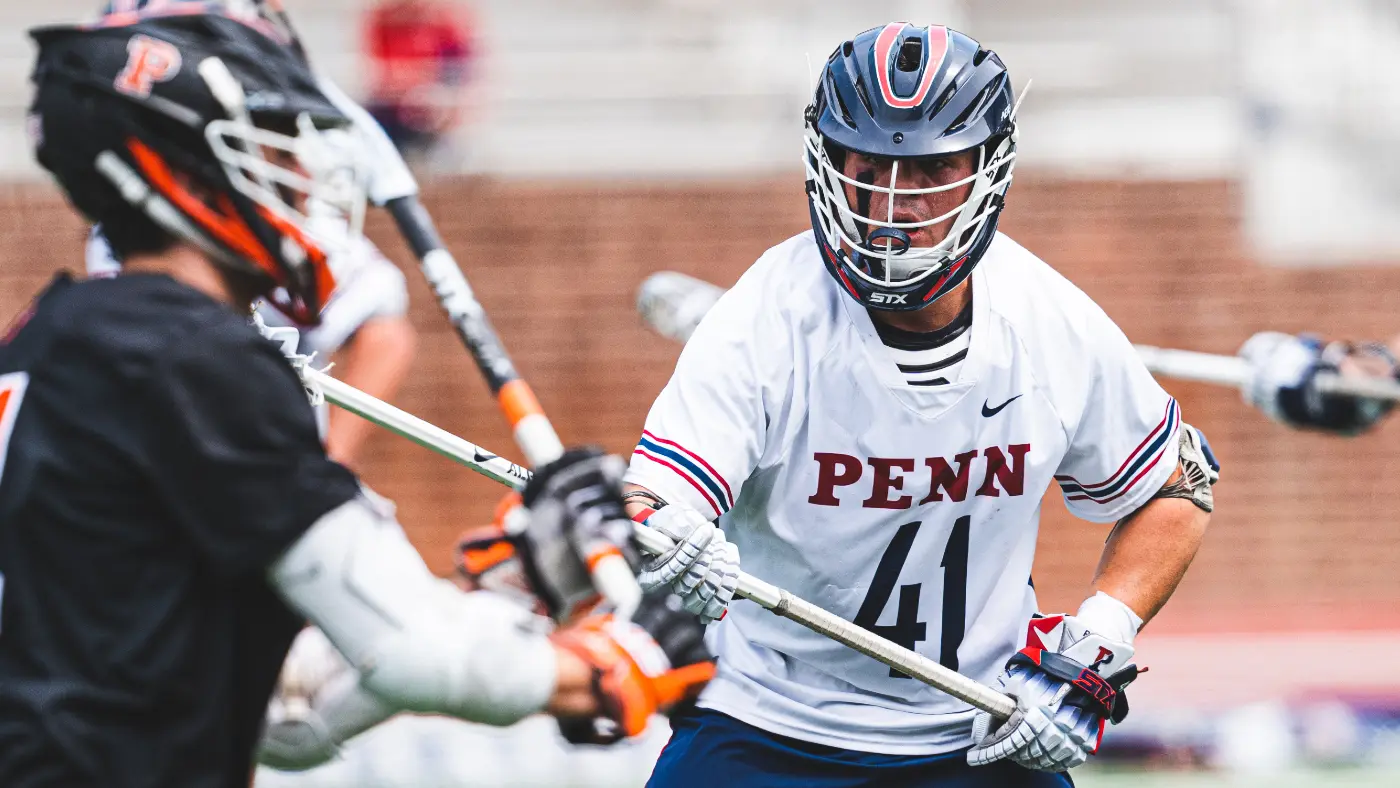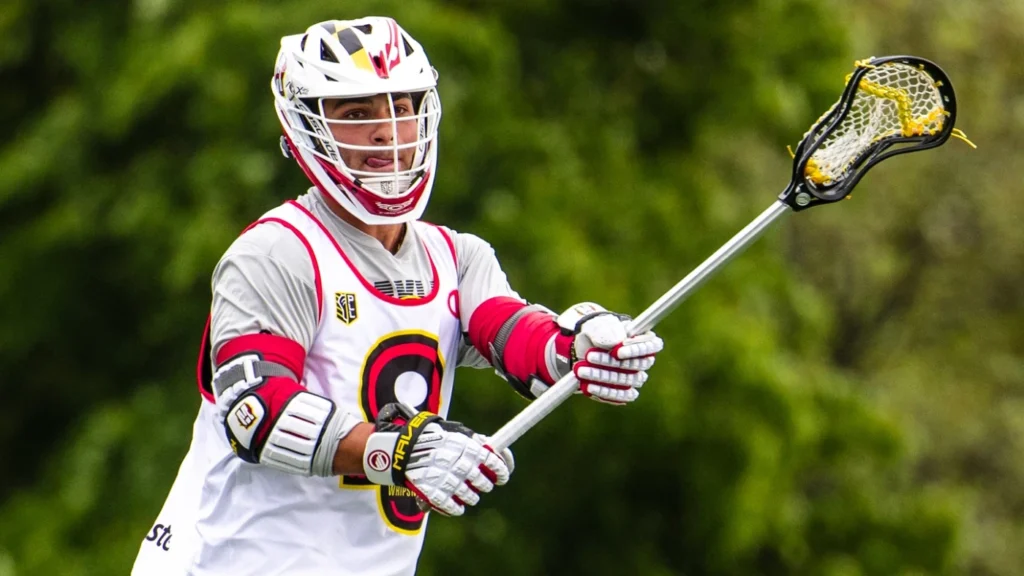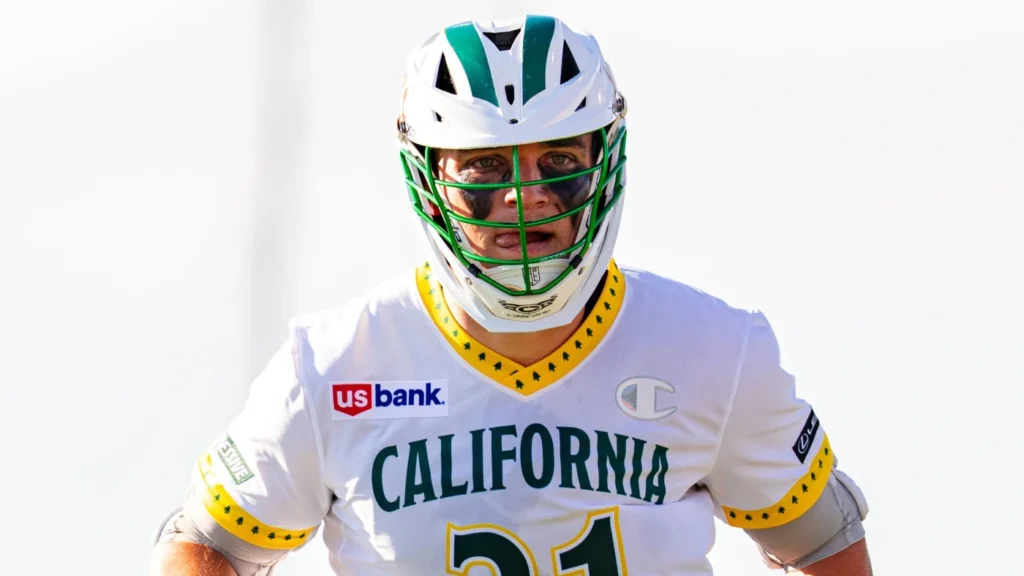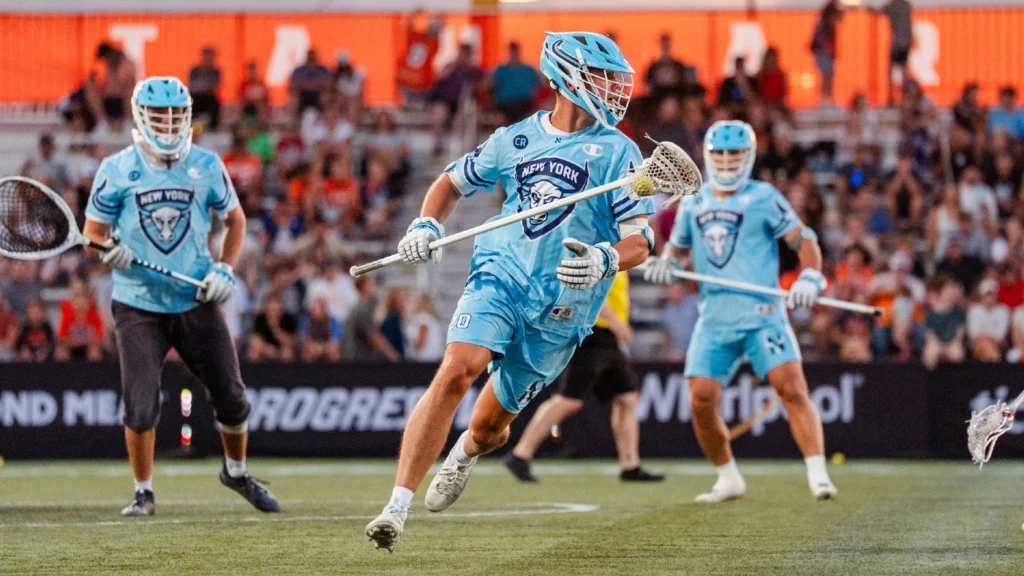
Inside Archers’ trade with Chaos to land Brendan Lavelle
By Zach Carey | May 9, 2025
Ahead of the College Draft each May, Utah Archers assistant coach Brian Kavanagh sends head coach and general manager Chris Bates dozens of trade ideas. He pitches dream trade scenario after dream trade scenario.
Most of the time, they don’t work out. Occasionally, though, one hits.
When Kavanagh sent Bates a proposal the week before the 2025 draft to trade with the Carolina Chaos to move up from pick No. 8 in the first round to No. 5, Bates was intrigued.
“Huh, it might have legs,” he responded.
The Archers were interested in adding Penn defenseman Brendan Lavelle to their roster. Since he shut down eventual No. 1 picks Brennan O’Neill and CJ Kirst in 2024, the Archers and the rest of the league had their eyes on the New York native.
“Dream scenario, if there’s one guy we could get with the limited needs that we have, we’ve known he’s kind of our guy for a while,” Kavanagh said. “The tape speaks for itself.”
As Utah considered trading up to get Lavelle, Bates worked to do his final due diligence to ensure he was their guy and that a move up would be justified. The relationship Lavelle has with Archers short-stick defensive midfielder Piper Bond (who played with him at Penn for three years) helped Utah confirm he was a culture fit in its locker room. Four days before the draft, Bates called Bond to hear more about his former teammate.
“Does he fit?” Bates asked Bond. “What’s he like as a competitor?”
“He's tough as nails,” Bond responded. “He's a ton of fun to play with. He flips that switch and locks way in. His aggression and ability to just play [against] a variety of guys, I think, is super, super valuable. He’s also a culture fit, he’ll be one of the boys.”
After talking to Lavelle and a few other people around him, including Penn head coach Mike Murphy, Bates and the Archers felt great about going after him and trading up.
“We weren't willing to take the chance [of not trading up],” Bates said after the fact. “We just circled the guy and said, ‘Let's go do it!’”
Utah heard the New York Atlas – who owned the No. 6 pick – had been in contact with Lavelle. Although the Archers suspected that the Maryland Whipsnakes would pick an offensive player seventh overall, head coach and general manager Jim Stagnitta being a Penn graduate and potentially targeting Lavelle to get younger on defense posed another possible threat that motivated the Archers to move up.
Given that the three teams with the first four picks looked unlikely to trade back to No. 8, Kavanagh identified the Chaos at pick No. 5 as a realistic trading partner.
Bates and Kavanagh considered what would be fair compensation to move up three spots and jump those two clubs. Would a swap of Utah’s No. 18 pick and Carolina’s No. 21 work so the Archers could hold on to the last pick in the second round, No. 16? Was No. 16 for No. 21 more fair? Should they try to fold in a 2026 selection, maybe their future second-rounder, instead? They eventually decided that the five-pick jump from the middle of the third round to the end of the second would be enough to get Carolina’s attention.
“We felt like it was a win-win,” Bates said.
Bates reached out to the Chaos four days before the draft. General manager Spencer Ford and head coach Roy Colsey weren’t immediately responsive to the proposition, which made Utah nervous. Roughly a day later, Colsey let Bates know that they were considering the deal.
Two days before the draft, the two sides came to an agreement to swap picks No. 5 and 21 for No. 8 and 16. The only stipulation? The Archers wouldn’t take a left-handed offensive player with the fifth pick. Each staff had an understanding that Carolina was still likely going to get the player it wanted – who turned out to be Syracuse attackman Owen Hiltz – with the eighth pick.
While the deal was agreed to in principle on Sunday, Utah and Carolina kept it quiet to guard against the rest of the league making subsequent moves.
“We wanted to keep it quiet up until draft day so, if the Atlas really were targeting [Lavelle] at six, and we jumped ahead of them, and they found out about it, they couldn’t jump up to four,” Kavanagh explained. “So we kind of kept our cards close to our vest.”
Then, once the Boston Cannons drafted Coulter Mackesy fourth overall, the two sides formalized their deal, relayed it to the league and Utah went on the clock. Bates turned in the pick immediately and selected Lavelle, whom they consider to be a “cornerstone guy” for the team’s future.
Was the trade-up worth it? The Archers staff admits it’s entirely possible that they could have landed Lavelle by staying put at eighth overall. But playing that game isn’t in their DNA.
Bates thinks through draft trades and draft picks in the context of what he’d regret at the end of the night. “How disappointed am I going to be after this draft if we let something get away that we might have been really able to get?” he asks himself. Lavelle’s talent as a lockdown cover defender was too good to risk missing out on.
Utah was always going to take a righty attackman or midfielder with its second pick. Moving out of No. 16 put that selection at risk a bit. So did the run on those players in the first two rounds with eight right-handed offensive players going off the board in the first 14 picks. But Sam King falling to the Archers at No. 18 made up for that.
Utah’s plan to take Richmond’s Mitchell Dunham in the third round made the decision to give up pick No. 16 for No. 21 easier. Having spoken with the Spiders’ staff and hearing that Dunham wasn’t on other clubs’ radars, they figured they could still get their favorite late-round defender at No. 21 after drafting a right-handed offensive player like King 18th overall. They did just that before closing out the draft with Maryland’s Bryce Ford at 32nd overall.
Utah is particularly excited about its draft haul and its draft process.
“We're thrilled,” Bates said. “We feel like we did really well, came out with what we wanted.”
“I think we got what we wanted,” Kavanagh added. “Mission accomplished. So, we feel pretty good.”
Kavanagh’s presence as Bates’ right-hand man in the draft process stands out. With Bates, he’s Utah’s lead talent evaluator. And, evidenced by this trade, he’s always looking for avenues to make the Archers better.
“He's a great assistant GM,” Bates said. “He's really good. He’s creative and thinks out of the box.”
The Archers have won a pair of championships the last two years in some part because they’ve been hyper-focused on drafting to their needs. By being aggressive and imaginative within that strategy, they just made the best roster in lacrosse markedly better.




